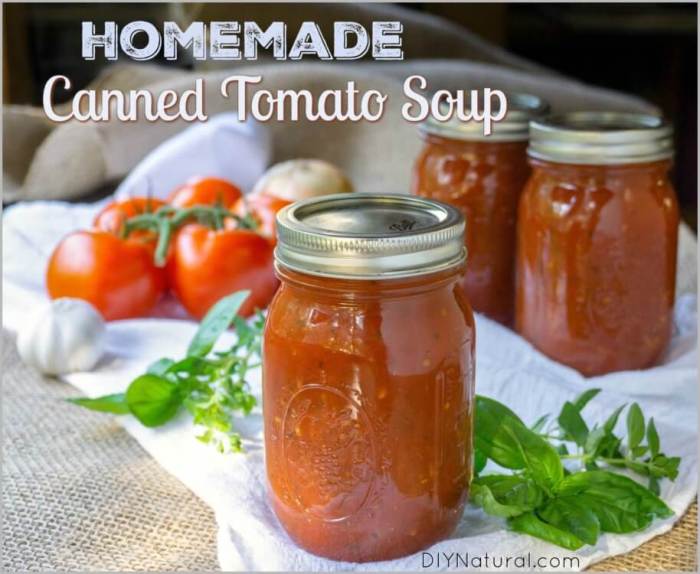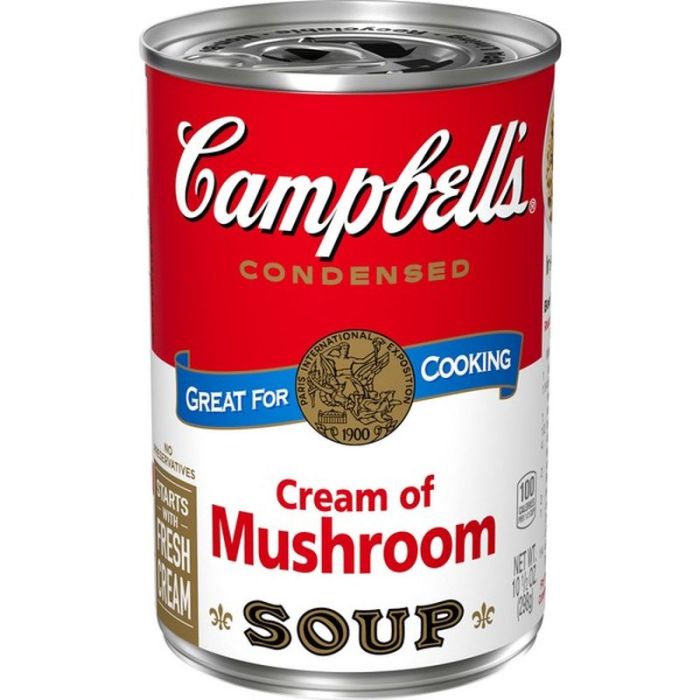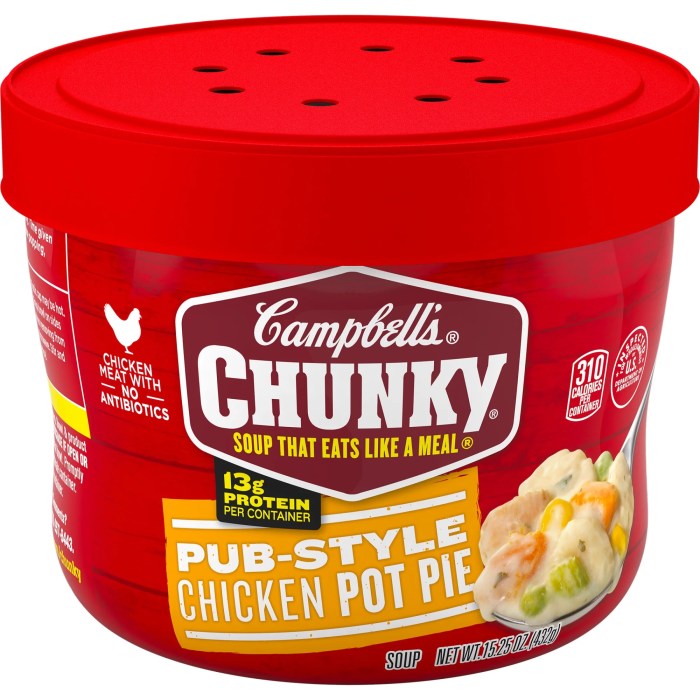Ball Tomato Soup Canning: A Batak Tradition Reimagined
Ball tomato soup canning recipe – Canning tomato soup, particularly using Ball jars, represents a beautiful blend of preserving tradition and modern culinary practices. For generations, preserving the bounty of the harvest has been a cornerstone of Batak culture, mirroring the resourcefulness and community spirit deeply ingrained in our heritage. This practice extends beyond simply preserving food; it’s a connection to our ancestors, a testament to our resilience, and a celebration of the land’s abundance.
This guide will explore the art of canning Ball tomato soup, offering a modern interpretation of this timeless practice.
Introduction to Ball Tomato Soup Canning

Source: diynatural.com
The history of canning is intertwined with the evolution of food preservation techniques. Ball jars, renowned for their quality and durability, have become synonymous with home canning. Their iconic design and reliable seal have made them a staple in kitchens worldwide. Home canning tomato soup offers numerous benefits: it allows for control over ingredients, ensuring quality and freshness; it reduces food waste by utilizing surplus tomatoes; and it provides a convenient and delicious supply of soup throughout the year, reminiscent of the traditional Batak practice of preserving food for leaner times.
Essential equipment includes Ball jars (various sizes), a large pot for blanching, a pressure canner, jar lifter, funnel, ladle, and a clean workspace. Supplies needed are lids and bands for the jars, a recipe for tomato soup, and of course, ripe tomatoes.
Selecting and Preparing Tomatoes
Choosing the right tomatoes is crucial for a flavorful soup. Select ripe, firm tomatoes with rich color and minimal blemishes. Heirloom varieties, with their unique flavors and textures, are excellent choices. Avoid tomatoes that are overripe, bruised, or showing signs of rot. Washing the tomatoes thoroughly under cool running water is the first step.
Blanching, a process of briefly submerging the tomatoes in boiling water, helps loosen the skins for easier peeling. After blanching, immediately transfer the tomatoes to an ice bath to stop the cooking process. Peeling becomes much easier after blanching. To remove seeds and cores, simply slice the tomatoes in half and gently squeeze out the seeds and pulp, leaving the flesh intact for a smoother soup.
Ball Tomato Soup Recipe Variations

Source: readersdigest.ca
This section presents three unique Ball tomato soup recipes, catering to different spice preferences.
- Mild Tomato Soup: This recipe focuses on the natural sweetness of the tomatoes, using simple seasonings like onion, garlic, and a touch of basil.
- Medium Spicy Tomato Soup: A dash of cayenne pepper or a few finely chopped jalapeños adds a pleasant kick to this version. The addition of smoked paprika provides a smoky depth of flavor.
- Spicy Tomato Soup: For those who prefer a bolder flavor, this recipe incorporates a generous amount of chili flakes, habanero peppers, or a blend of your favorite hot peppers.
- Heirloom Tomato Soup: This recipe celebrates the diverse flavors of heirloom tomatoes. A mix of different colors and varieties creates a visually stunning and intensely flavorful soup. Minimal seasonings are used to let the tomatoes shine.
- Tomato Soup with Carrots and Celery: This hearty soup adds the sweetness of carrots and the subtle earthiness of celery to the classic tomato base. A touch of thyme complements the vegetables beautifully.
Canning Process: Step-by-Step Guide

Source: twokooksinthekitchen.com
Sterilizing the jars and lids is paramount for food safety. Follow the manufacturer’s instructions for proper sterilization. Fill the sterilized jars with the prepared tomato soup, leaving the recommended headspace (usually about ½ inch). Remove air bubbles by gently tapping the jars. Wipe the jar rims clean before placing the lids and bands.
Pressure canning is essential for safely preserving low-acid foods like tomato soup. Improper canning techniques can lead to botulism, a serious and potentially fatal illness.
| Altitude (ft) | Processing Time (minutes) |
|---|---|
| 0-1000 | 90 |
| 1001-2000 | 100 |
| 2001-3000 | 110 |
Troubleshooting and Storage
Common problems during canning include improperly sealed jars (indicated by a lack of concave lid) and spoilage (signs of mold, unusual smell, or bubbling). Proper storage in a cool, dark, and dry place is crucial. Home-canned tomato soup, when properly processed and stored, typically has a shelf life of 12-18 months.
Serving Suggestions, Ball tomato soup canning recipe
Canned tomato soup is incredibly versatile. Pair it with grilled cheese sandwiches, use it as a base for pasta sauces, or add it to stews and casseroles. Garnishes such as fresh basil, croutons, or a dollop of sour cream can elevate the taste. The mild soup offers a clean, bright tomato flavor; the medium-spicy version provides a balanced heat; the spicy soup delivers a fiery punch; the heirloom soup showcases a complex medley of tomato flavors; and the vegetable soup offers a hearty and satisfying experience.
Visual Guide: Canning Tomato Soup
The visual changes during preparation are significant. Washed tomatoes appear clean and vibrant. After blanching, the skins are noticeably loosened, making peeling easier. Proper jar filling leaves the appropriate headspace, preventing bulging during processing. A properly sealed jar will have a concave lid, while an improperly sealed jar will have a flat or convex lid, indicating a failed seal.
Answers to Common Questions: Ball Tomato Soup Canning Recipe
What types of tomatoes are best avoided for canning soup?
Avoid tomatoes that are overripe, bruised, or exhibiting signs of disease. Their poor texture and potential for spoilage will compromise the final product.
How long will home-canned tomato soup last?
Properly canned tomato soup can last for 12-18 months, provided it’s stored in a cool, dark, and dry place.
What should I do if a jar doesn’t seal properly?
Refrigerate and consume unsealed jars within a few days. Do not attempt to re-can them.
Can I use regular canning jars instead of Ball jars?
While Ball jars are popular, other brands of jars designed for pressure canning are suitable as long as they meet the appropriate safety standards.


